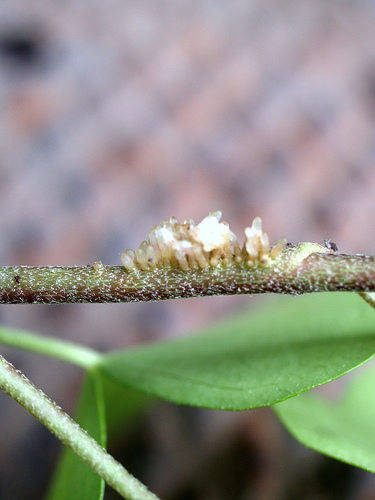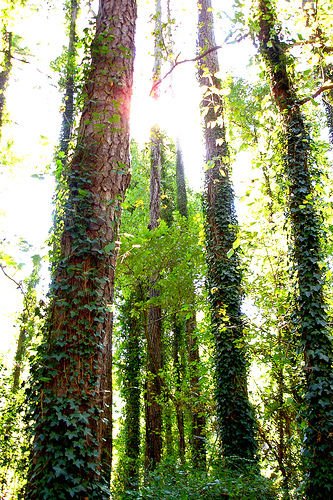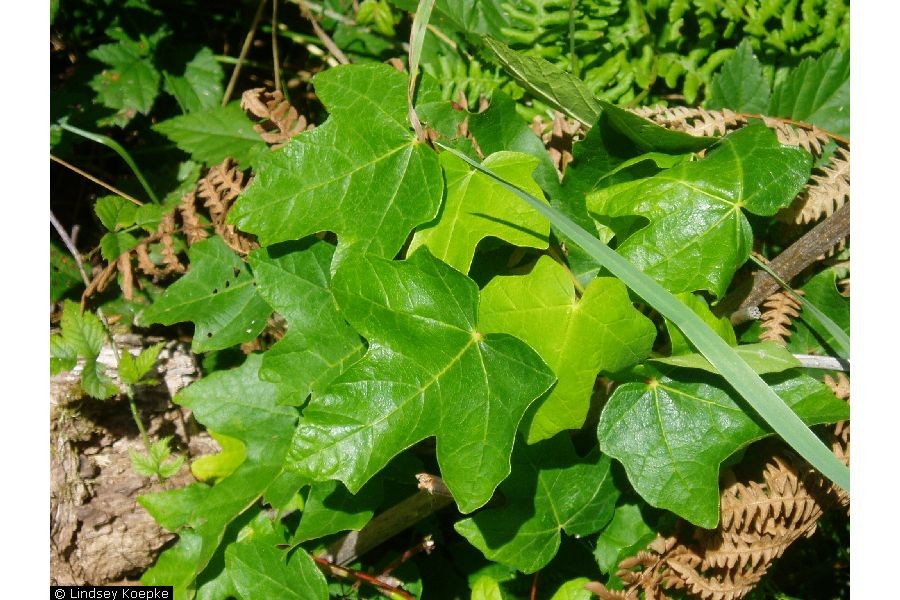


Adaptations
English Ivy is known for its ability to climb to the top.
Because it tends to grow in shady, forested
areas, it developed
its ability to move up vertical surfaces to get closer to the
sun
 to
complete
photosynthesis and to spread across the ground
for nutrients. Ivy is able to do this by an aerial root
system. These root structures release a sticky substance
that allows the ivy to climb up a variety of surfaces,
pr
to
complete
photosynthesis and to spread across the ground
for nutrients. Ivy is able to do this by an aerial root
system. These root structures release a sticky substance
that allows the ivy to climb up a variety of surfaces,
pr eferably ones that are rough and porous such as tree bark.
Adhering discs develop on the stem, and the ivy is thoroughly
attached to the surface.
eferably ones that are rough and porous such as tree bark.
Adhering discs develop on the stem, and the ivy is thoroughly
attached to the surface.
Because English Ivy is so mobile, it does not have an extensive root system. Instead of roots burrowing deep into the ground, the roots of this plant allow for easy movement. To pick up nutrients, the ivy spreads across large area of ground for surface nutrients, rather than using the soil nutrients from one specific location. Hedera helix does not have to share the soil space with other plants because as it spreads, the ivy takes over the space of other plants. These plants are forced to struggle for nutrients and eventually die off, leaving the ivy with all the soil space it needs.
This amazing climbing plant is an invasive species, which means that it has a variety of adaptations to help it survive in many different circumstances. It can withstand poor soil conditions, which means it can survive in most habitats. Poison in the leaves keeps mammals from feeding on the plant. English Ivy is very fragile, so twigs and stems are easily broken when stepped on. Because the plant frequently grows across areas of ground, one of its adaptations is that broken pieces of stem can regenerate a new plant if they are able to root into the soil.
Many adaptations have to do with the
life cycle, as well. The
flowers are the yellow green color because that is what is
attractive to
bees
and flies, the pollinators of the ivy. The flowers also are adapte d to bloom in the fall, when most
flowers bloom in spring, because there is little competition.
Bees and flies at this time of year are searching for whatever
they can find. Seeds are very important in reproduction,
so in order to complete this process, seeds have adapted by
being covered with a very hard outer shell that allows them to
survive through the winter if they are not transported out of
the plant. Another adaptation of the seed is that is it is slightly poisonous. Birds cannot eat all of the seeds
without getting sick, so the precise amount of poison ensures
that the seed is attractive to the birds, but is moved to a
different location rather than eaten.
d to bloom in the fall, when most
flowers bloom in spring, because there is little competition.
Bees and flies at this time of year are searching for whatever
they can find. Seeds are very important in reproduction,
so in order to complete this process, seeds have adapted by
being covered with a very hard outer shell that allows them to
survive through the winter if they are not transported out of
the plant. Another adaptation of the seed is that is it is slightly poisonous. Birds cannot eat all of the seeds
without getting sick, so the precise amount of poison ensures
that the seed is attractive to the birds, but is moved to a
different location rather than eaten.

